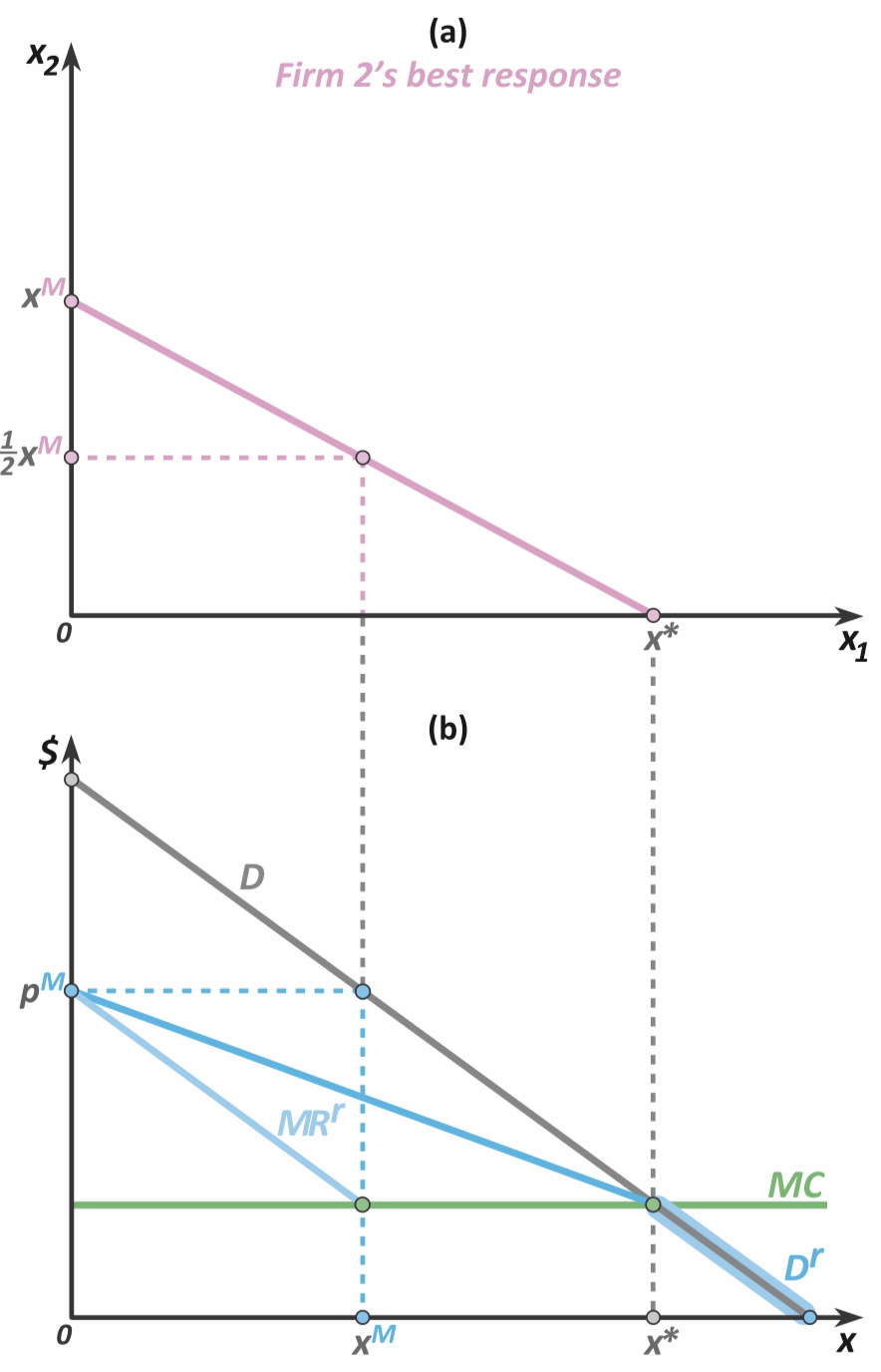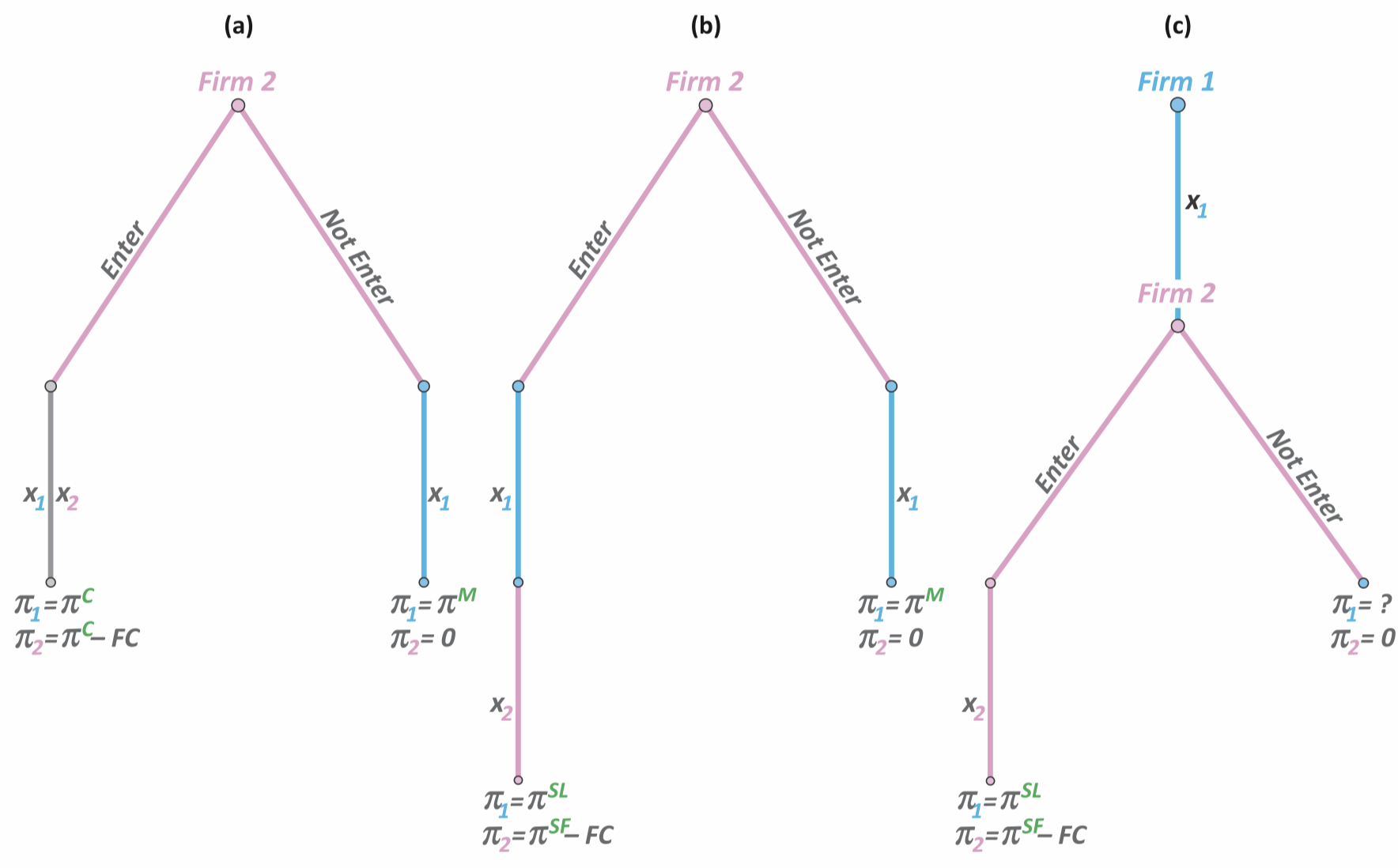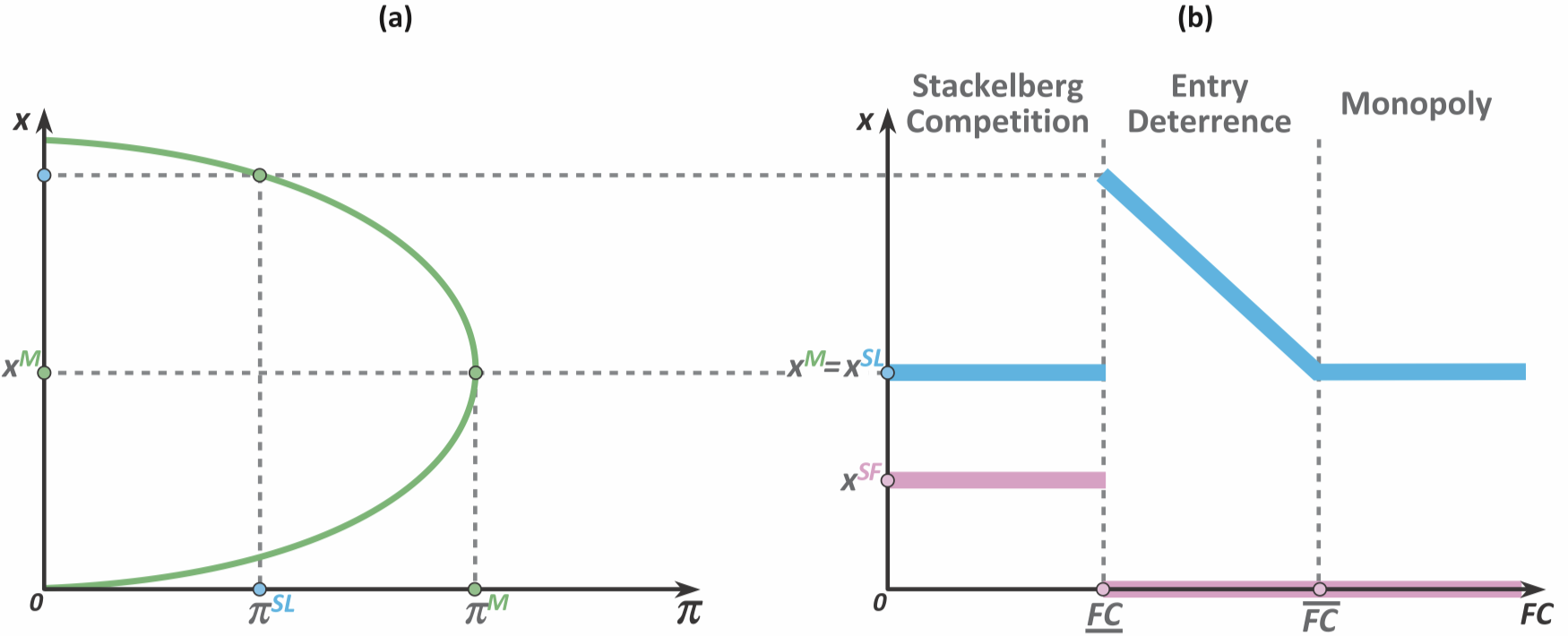Firms will choose quantity as the strategic variable.

- Determining Firm 2’s Best Response Curve:
- When firm 1’s quantity = 0, firm 2’s best response is to produce (=monopoly quantity)
- When firm 1’s quantity > 0, firm 2’s best response derived by the reduction in demand in graph (c):
- (=full market demand) is shifted left by (=firm 1’s produced quantity) to ; Firm 2’s BR is to optimize at
- → This shows that when Firm 1 produces , will shift left so much that at .
- Firm 1’s BRC is symmetrical, as shown in (b)
- → Firms produce (= cournot quantity)
- →
Info
Cornout Price converges to competitive prices as the number of firms increase. (Take my word for this; it’s proven mathematically but not shown above)
Sequential Move: Stackleberg Competition
- Stackleberg Leader is Firm 1, Stackleberg Follower is Firm 2

Firm 1 considers Firm 2’s expected BRC before making a move:
Profit maximize knowing firm 2’s BRC:
- Graph (a) is the expected Firm 2’s BRC
- When Firm 1’s quantity then firm 2 produces nothing → Firm 2 faces the full market demand ⇒
- When Firm 1’s quantity then firm 2 faces the residual demand which is calculated by:
- at ,
- …then BR: and
- …thus
- …equivalently
- at ,
- …then BR: and
- …thus
- …equivalently
- at ,
Sequential Move: Entry Deterrence
Game Structure
- First move is Firm 2’s entry decision
- Second move is either Cournot Quantity, Stackleberg Quantity competition (Bertrand isn’t considered)
- If firm 2 enters it must pay a Fixed Cost (FC) which is an economic cost to them (=matters in profit calculation).

- Firm 2 chooses entry;
- …if it enters it must pay FC, and two players cornout compete;
- …if it doesn’t its profit is zero, and Firm 2 is a monopoly
- Firm 2 chooses entry;
- …if it enters it must pay FC, and two players stackleberg compete with firm 1 as stackleberg leader;
- …if it doesn’t its profit is zero, and Firm 2 is a monopoly
- Firm 1 chooses quantity first;
- …Firm 2 enters, paying FC, and Firm 2 gets stackleberg follower profit
- …Firm 2 doens’t enter, and Firm 1 gets profit from its original quantity
⇒ The game structure of (c) allows for strateigic entry deterrance by firm 1:
Entry Deterence
- Firm 1 may deter entry to maximize profit by setting a certain quantity
- FC is an exogenous variable → firm 2’s entry decision will depend on how big FC is → thus, firm 1’s entry deterrence will depend on how big FC is

(a) is the profit against a choice of production quantity for a monopoly.
→ Then, see (b):
- If : Second firm will not enter no matter …when
- If : First firm will deter entry by increasing production …when …i.e. Firm will deter entry until drops so much that it’s better to compete (and get Stackelberg profit)
- If : normal stackleberg competition …where firm 1 is Stackelberg Leader (SL) and get …and firm 2 is Stackelberg Follower (SF) and get